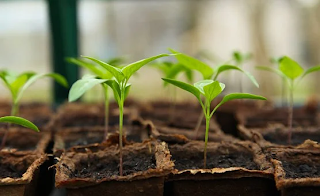215

Photosynthesis is a process in which plants use sunlight’s energy to produce their food from water and carbon dioxide. But this process is very ineffective, with only 1 percent of the energy found in sunlight ending up in the plant.
Image Credits: Pixabay
Researchers at the University of California, Riverside (UCR) and the University of Delaware have improved the natural process of photosynthesis and found a new method of growing plants in darkness using artificial photosynthesis. This artificial photosynthesis could enhance agriculture in areas that don’t get receive sufficient sunlight, help feed future space and support humankind to grow plants on Mars, the red planet.
The researchers used a two-step electro catalytic process to convert electricity, water and carbon dioxide into acetate, a form of vinegar’s main component. This acetate was then consumed by food-producing plants to grow in the dark. Researchers discovered that using solar panels to generate electricity to power the chemical reaction could increase the conversion efficiency of sunlight into food and make it up to 18 times more efficient for other food products.
The research results showed that all the plants tested were able to digest the acetate to use the carbon molecules. In some plants, it was stored in plants’ amino acids, while in others, it was present in sugars used by plants as energy for growth.
The research team used this technique on various food-producing microbes and plants, including green pea, canola, yeast, green algae, fungal mycelium, rice, tomato, tobacco and cowpea. They found that these organisms could be grown in acetate medium in darkness more efficiently than in sunlight. The production of algae was increased four times than the original, and the yeast was grown 18 times more efficiently.
“We found that a wide range of crops could take the acetate we provided and build it into the major molecular building blocks an organism needs to grow and thrive. With some breeding and engineering that we are currently working on we might be able to grow crops with acetate as an extra energy source to boost crop yields,” said Marcus Harland-Dunaway, a Doctoral Candidate in the Jinkerson Lab at the UCR.
According to scientists, this new advanced technique could be used to grow crops in cities and on other planets like Mars. Unlike Earth, Martian soil is harsh for crops, devoid of important organic matter and receives less sunlight. Hence, researchers said that they could use the process of artificial photosynthesis to grow food on the Red planet if production is possible. They are still working to find new techniques to improve the growth rates on this planet.
“Using artificial photosynthesis approaches to produce food could be a paradigm shift for how we feed people,” said Robert Jinkerson, Researcher and Assistant Professor at the UCR. “By increasing the efficiency of food production, less land is needed, lessening the impact agriculture has on the environment. And for agriculture in non-traditional environments, like outer space, the increased energy efficiency could help feed more crew members with less inputs.”
The detailed research has been published in the journal Nature Food.
Follow us on Medium!

